UPDATE #2: watch “Will & Jane: The Movie” – 6 minutes on youtube: https://www.youtube.com/watch?v=3pevAsxvhts
UPDATE #1: new images from the exhibition have been added!
The Will & Jane: Shakespeare, Austen, and the Cult of Celebrity exhibit at the Folger Shakespeare Library is garnering a good deal of press (as it should!). Apparently there are record crowds wanting to get a glimpse of their two favorite Literary Heroes and how they have shown up in popular culture for the past 200 years – and “The Shirt” is no small part of this (a.k.a. Colin Firth as Mr. Darcy) – no, no, don’t get your hopes up, Mr. Firth is not part of the Exhibit (though he would be most welcome…), but rather the shirt worn for the endlessly-youtubed scene of Darcy emerging from a pool of standing water at Pemberley is on display in a locked glass case where it can be on view but protected from the expected mass hysteria of, well, the masses… Kissing a glass case is not quite the same as stroking a cotton shirt, albeit hanging rather listlessly from a plastic form… but it is still a must see if you can get there! Grown women have been known to faint away, despite the message from a young Jane to “run mad as often as you chuse; but do not faint…” I do hope the Folger is up to the task of a gallery full of shirt-mad persons… (and dare I add that though I am NOT one of the shirt-hysteric Janeites who think this scene is the best in all of the nearly 6 hour film, I do confess a strong interest in getting a glimpse of the actual shirt worn by Colin Firth…)
If you are able to attend the JASNA AGM this year, to be held in Washington DC, October 21-23 (but do allow extra days for all there is to see and do) – you will get a chance to go to the Folger and see what all the fuss is about – the two curators (Janine Barchas of the University of Texas at Austin, and Kristina Straub of Carnegie Mellon University) will be on hand to tell us all about it. If you are not at the AGM, the exhibit runs from August 6 – November 6, 2016 and admission is free. In the sad event you shall miss it entirely, there are also various articles to read – see the links below.
***************
![will-jane-porcelain-figures2-jb[1]](https://janeausteninvermont.blog/wp-content/uploads/2016/08/will-jane-porcelain-figures2-jb1.png?w=660&h=554)
18th-century Staffordshire porcelain of William Shakespeare (Folger) /
and 20th-century figurine of Jane Austen (Joan Doyle)
Today however, I welcome Janine Barchas, who most graciously answered a few of my questions about how the idea of this Will & Jane grouping came about… if you have any questions, please comment below and she will get back to you. As an incentive, and especially for those of you unable to make it to the Folger, Janine has provided us a copy of the 18-page exhibit brochure – another piece of Jane Austen celebrity “stuff” we all like to collect! (see below for details)
***************
JAIV: Tell us how this exhibit came about?
JB: This was a case of classic academic one-upmanship. In 2012, Michael Witmore, the Director of the Folger Shakespeare Library, came to the University of Texas at Austin for a conference about the fate of books in a digital world. Over a meal, I joked that Jane Austen was “giving Shakespeare a run for his money” and asked what he was planning to do about it. As Mike and I continued to spar about the differences and similarities between the fan cultures around these two famous authors, an idea was born: “Will & Jane.”
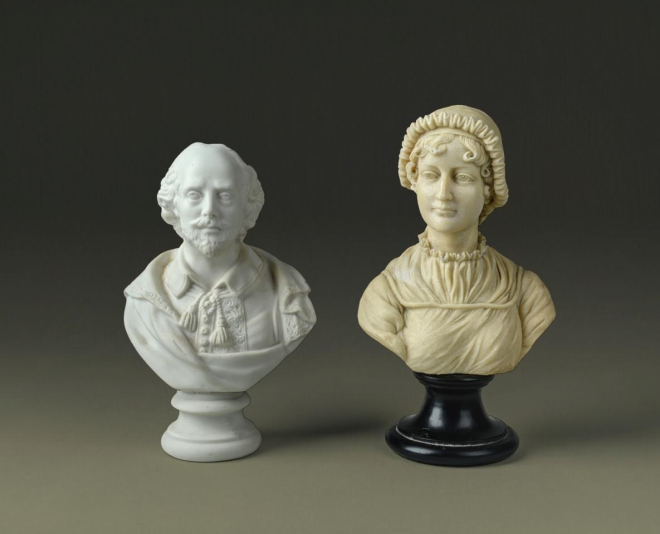
Busts of William Shakespeare (Folger) and Jane Austen (Joan Doyle)
JAIV: How did you and Kristina Straub come to work on this exhibit together?
JB: Our partnership was the result of solid academic matchmaking! Mike Witmore was her former colleague at Carnegie Mellon University, so Kristina’s name came up right away in the context of her deep knowledge of Shakespeare’s reception in the 18th century. She and I had never met before our work on “Will & Jane” even though we are both 18th-century scholars and know many of the same people in what is a smallish field. This exhibition has been a full three years in the making, during which time we have grown very close. I look at our publications and label text and cannot tell you what sentence began as mine and which was first drafted by Kristina. Given that academics are known for their social awkwardnesses and a tendency to work best when alone, our partnership on “Will & Jane” has been an extraordinary intellectual experience – even outside of the unique content of the show.
JAIV: You mostly talk and write about Jane Austen, but also the book itself as part of the material culture of the eighteenth and early nineteenth centuries. What was the biggest challenge in taking on this exhibit that largely deals with the artifacts of celebrity created and collected over the past 200 years?
![will-jane-porcelain-figures-jb[2]](https://janeausteninvermont.blog/wp-content/uploads/2016/08/will-jane-porcelain-figures-jb2.png?w=660) Royal Worcester porcelain figurine of “Emma Woodhouse” (1998) from the collection of Joan Doyle / and a colored pottery tableau entitled “Othello Relates his Story (ca. 1880) from the collections of the Folger
Royal Worcester porcelain figurine of “Emma Woodhouse” (1998) from the collection of Joan Doyle / and a colored pottery tableau entitled “Othello Relates his Story (ca. 1880) from the collections of the Folger
JB: The dominance of non-book artifacts in this exhibition (ceramics, paintings, odd assortments of relics, tchotchkes, and souvenirs) may seem at odds with a serious library of rare books such as the Folger. However, although both Shakespeare and Austen are fundamentally admired for their great literary works, the history of their afterlives and the nature of their modern celebrity is not just about steady streams of new editions but about the material objects that ordinary fans crave and collect. This exhibition took us out of the usual library stacks of books and into art vaults and collections of so-called “realia.” Part of the challenge, then, of putting this exhibition together was for two academics who were used to talking about the language of plays and novels to learn how to think and talk about non-book and 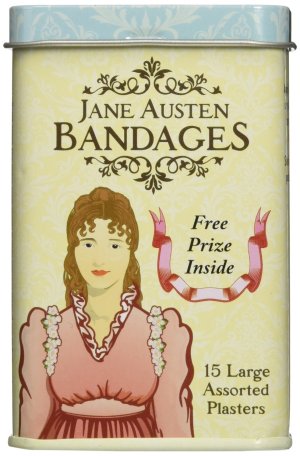 wordless objects and the stories they can tell. Mixing high and low culture in this exhibition (books with bobble-heads, so to speak) has been both a joy and a challenge. In practical terms, today’s objects that celebrate Jane Austen at her 200-year mark lack the historical patina of those Shakespeare “relics” and souvenirs that have been carefully preserved for two centuries. And yet we wanted these authors to stand together as potential equals. This meant that every juxtaposition of old and new objects, every comparison between the afterlives of Will and Jane, had to show similar impulses across centuries of fandom – in spite of any obvious differences between current market values of the materials shown.
wordless objects and the stories they can tell. Mixing high and low culture in this exhibition (books with bobble-heads, so to speak) has been both a joy and a challenge. In practical terms, today’s objects that celebrate Jane Austen at her 200-year mark lack the historical patina of those Shakespeare “relics” and souvenirs that have been carefully preserved for two centuries. And yet we wanted these authors to stand together as potential equals. This meant that every juxtaposition of old and new objects, every comparison between the afterlives of Will and Jane, had to show similar impulses across centuries of fandom – in spite of any obvious differences between current market values of the materials shown.
JAIV: What most surprised you in your findings?
JB: We initially thought that in order to fill 20 large display cases, we might have to stretch the comparison a bit here and there. But we were amazed by the tight parallels between, for example, the public spectacles that celebrated Shakespeare around his 200 mark (e.g. a museum dedicated to the Bard and a Jubilee) and today’s BBC bonnet dramas that, in essence, do some of that same work to promote Jane Austen. Also, we were genuinely surprised by the manner in which Henry and Emily Folger resembled, in their dedication to all things Shakespeare, the collecting impulses of Alberta and Henry Burke, the couple who amassed the world’s most significant Jane Austen collection (now split between the Morgan Library and Goucher College). One thread across the exhibition is how these two American couples, collecting decades apart and focused on two very different writers, pursued their purchases in the same way.
JAIV: What do you hope visitors will take away from this exhibit?
JB: A sense of fun. We hope the combination of whimsy and scholarship is infectious and will help folks to see that even pop culture benefits from a larger historical framework.
JAIV: What has been the response so far?
A chalice made from the mulberry tree Shakespeare planted (Folger) /
a lock of Jane Austen’s hair (Jane Austen’s House Museum)
JB: A lively and lavishly illustrated review across two pages of the NYT weekend section on opening day surely helped to boost visitor numbers as well as raise our curatorial spirits. The public seems genuinely curious about a show that pairs these equally famous but very different authors. So far, we’ve had some record numbers in terms of daily visitors and received enthusiastic feedback from Folger docents. The docents are the well-informed volunteers who lead daily group tours and have their finger on the pulse of true public reaction. When they remain enthusiastic, you know a show is doing well.
JAIV: Who besides Shakespeare and Jane Austen has had such an impact on our celebrity-obsessed culture?
JB: Modern movie stars (and before them the starry thespians of the 18th-century stage) have glammed up both Will and Jane. Our exhibition features a number of film actors who have their feet in both Shakespeare and Austen camps and whose own celebrity is in a symbiotic relationship with these authors. From Laurence Olivier (photo stills and movie clips) to Emma Thompson (she loaned us the original typescript of her Sense and Sensibility screenplay), objects about and from movie stars adds a bit of Hollywood sparkle throughout the exhibition.
JAIV: What is your next project???
JB: Hopefully another project with Kristina. It will indeed also be very hard to go back to a steady diet of “just books” after this. I suspect that odd bits of material culture will cling to all my research from now on. I see both Will and Jane differently now. They are each bigger than their written works alone.
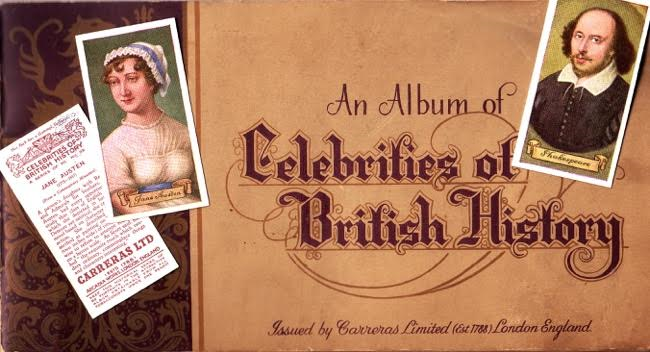
This collector’s album for cigarette cards (London: Carreras Limited, ca. 1935) is one of many items in the exhibition showing Will and Jane being used to advertise non-book products
******************
Thank you Janine! – very much looking forward to seeing you and Kristina at the Folger in October!
If you would like to comment or ask Janine a question, please do so in the reply box below. Deadline will be Wednesday August 31, 2016 at 11:59pm – winner will be announced on Thursday Sept 1, 2016. Domestic only, sorry to say (our postal rates have soared).
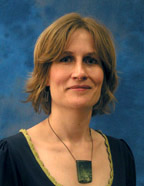 Janine Barchas is Professor of English at the University of Texas at Austin. She is the author of Matters of Fact in Jane Austen: History, Location, and Celebrity (Johns Hopkins University Press, August 2012). Her first book, Graphic Design, Print Culture, and the Eighteenth-Century Novel (Cambridge UP, 2003), won the SHARP book prize for best work in the field of book history. You can visit (and spend hours browsing!) her online digital project What Jane Saw (www.whatjanesaw.org) which includes the gallery of the British Institution that Jane Austen visited on May 24, 1813 and the “Shakespeare Gallery of 1796.” Barchas, along with colleague Kristina Straub, is currently curating an exhibition at the Folger on Will & Jane: Shakespeare, Austen, and the Cult of Celebrity.
Janine Barchas is Professor of English at the University of Texas at Austin. She is the author of Matters of Fact in Jane Austen: History, Location, and Celebrity (Johns Hopkins University Press, August 2012). Her first book, Graphic Design, Print Culture, and the Eighteenth-Century Novel (Cambridge UP, 2003), won the SHARP book prize for best work in the field of book history. You can visit (and spend hours browsing!) her online digital project What Jane Saw (www.whatjanesaw.org) which includes the gallery of the British Institution that Jane Austen visited on May 24, 1813 and the “Shakespeare Gallery of 1796.” Barchas, along with colleague Kristina Straub, is currently curating an exhibition at the Folger on Will & Jane: Shakespeare, Austen, and the Cult of Celebrity.
Further reading:
- Folger website: http://www.folger.edu/exhibitions/will-and-jane
- “Jane Austen’s Shakespeare” – Folger blog: Shakespeare & Beyond: http://shakespeareandbeyond.folger.edu/2016/08/12/jane-austen-william-shakespeare/
- “Curating Will & Jane” at Eighteenth-Century Life 40.2 (2016): http://ecl.dukejournals.org/content/40/2/1.full.pdf+html
- “Lit’s Dynamic Duo, Will and Jane, Shared Path to Pop Stardom.” New York Times 5 Aug 2016: http://www.nytimes.com/2016/08/05/books/will-jane-two-literary-superheroes-united-in-pop-culture.html?_r=0
- “‘Will & Jane’ is the Folger’s look at how the two authors reflect ourselves.” Washington Post 8 Aug 2016: https://www.washingtonpost.com/express/wp/2016/08/11/will-jane-shakespeare-austen-and-the-cult-of-celebrity-is-the-folgers-look-at-how-these-two-authors-reflect-ourselves/
- Janine Barchas’s What Jane Saw website: http://www.whatjanesaw.org/index.php – which includes the Shakespeare Gallery exhibit of 1796.
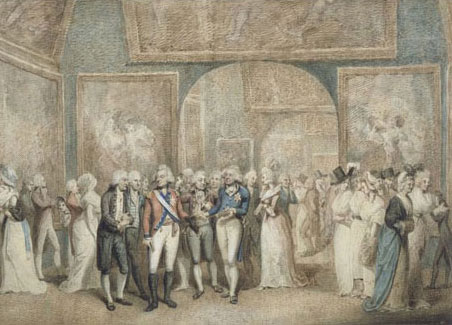
- Janine Barchas at JAIV on Jane Austen’s real Wentworths: https://janeausteninvermont.wordpress.com/2012/10/21/guest-post-janine-barchas-a-janecation-in-yorkshire-jane-austens-real-wentworths/
“Will & Jane: Shakespeare, Austen, and the Cult of Celebrity” runs August 6 through Nov. 6, 2016 at the Folger Shakespeare Library, 201 East Capitol Street S.E., Washington; 202-544-7077.


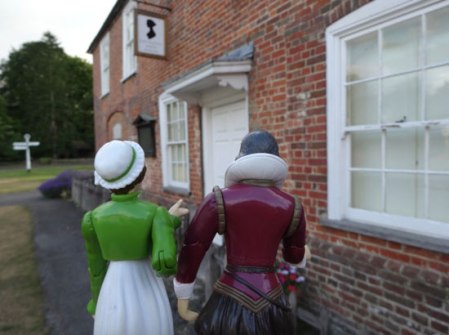

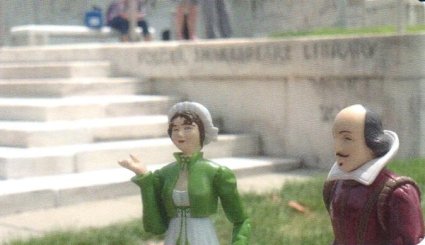


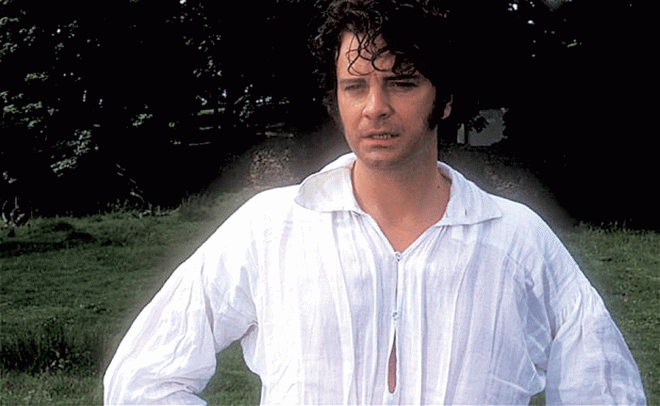
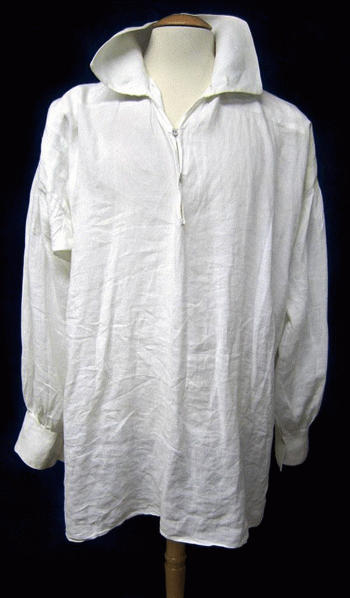
I visited the exhibit with my family this weekend and spent three glorious hours perusing each case and display. What a fascinating way to compare and contrast these two brilliant artists!
I was even able to watch a rehearsal of “Sense and Sensibility,” which happens to be the same production I have already seen twice in NYC. I was impressed with the amount of attention to detail required with each and every movement on the stage. I’m sure the final results will be wonderful!
Thank you so much to these two enthusiastic and dedicated Austen and Shakespeare scholars for sharing their work with us.
Dr. Barchas, you are a real star in the world of Austen academia and we all appreciate your talents.
LikeLike
Thank you JustJane for your comments about the exhibit! Are you going to write about it on your blog?? (hope that you do!) A nice perk to see the S&S in rehearsal. Will you be at the AGM in October?
LikeLiked by 1 person
Thank you, Deb. I do plan to post my visit to the exhibit on Just Jane 1813, but unfortunately, I can’t attend AGM in October. I hope you enjoy AGM, as I bet you’re attending. If you do attend, I highly recommend seeing “Sense and Sensibility!” I hope you have a wonderful time!
LikeLike
Thank you for this exhibit – hope that I can attend!
LikeLike
A very good interview, Deb.I wonder what these impusles to fandom across the centuries are caused by? Are they healthy? I suppose as long as they lead to a close engagement with Austens novels and Shakespeares plays they are good.I wonder of it is really possible to compare two different writers and say they are equal in any sort of meaningful way though.
LikeLike
Ms. Barchas “wetted” our appetite to see this exhibit when she spoke to the Louisville JASNA group and brought wonderful slides as well. Looking forward to seeing it in October!
LikeLike
I don’t think Jane Austen can be equal to Shakespeare. Shakespeare touches the human condition across cultures from poor to rich and from powerless to powerful. He touches the human experience at a deep level. Austen’s characters are middle class or upper class. They live in a world created , financed and run on slavery. There are no black people who are Jane Austen fans are there? There are no black people in JASNA are there? She does not translate to other cultures easily.
LikeLike
You are wrong there Tony – there are black people in JASNA – so best to check your facts on this (are you on one of your bash-JASNA-binges today Tony??), black scholars as well, Joyce Kerr Tarpley (wrote a book on ethics in MP) for one, Cornell West (Professor of philosophy at Princeton) another fine example – there are more.
You are also wrong that all of Austen’s characters “live in a world created , financed and run on slavery” – we can look at Mansfield Park in such a light, absolutely, but are you saying that all of England’s middle and upper classes are completely the result of a slave economy and that is what Austen was writing about?? You have a skewed view of the world – shall I go on about Empire and colonialism, etc?? – all laid at Britain’s feet? As for Austen, she does have a black character in Sanditon. And I disagree that she doesn’t translate to other cultures – are you not aware that there are various Jane Austen groups in South America, in Russia, Japan, and more? that she has been translated into over 45 languages? I think we can assume she is relating to all those people…
I could go on Tony – you are just wrong on all counts here!
LikeLike
Britain was run on slavery during her lifetime so the world she wrote about was the result of the proceeds of slavery. I really don’t think Austen does fit all cultures. The Japanese are just aping 18th century culture because they find it desirable.Anyway, South American countries have a large middle class that derives historically from Europe so that example doesn’t count. It makes them feel sophisticated in some way.Austen is not connecting with them at a deep level. How could 18th century British upper class culture really connect with them. No I am not bashing Jane Austen Societies I am pointing out that she is not comparable to Shakespeare. I do not think Jane Austen societies appeal to Afro Americans/ Carribean etc, even if there are few exceptions. I wonder what those Afro American members get from Austen anyway. I do not think I am that wrong, Deb.
LikeLike